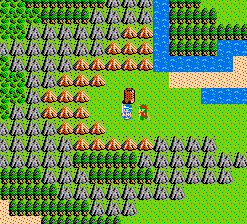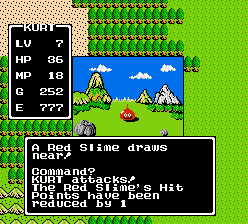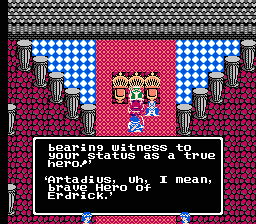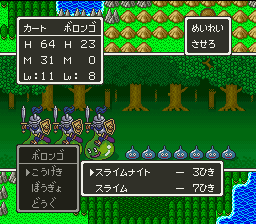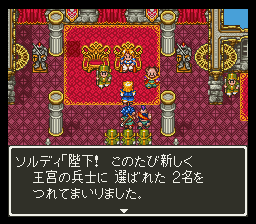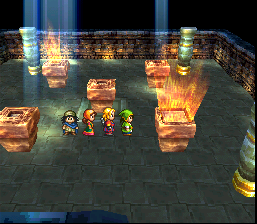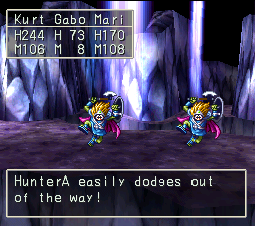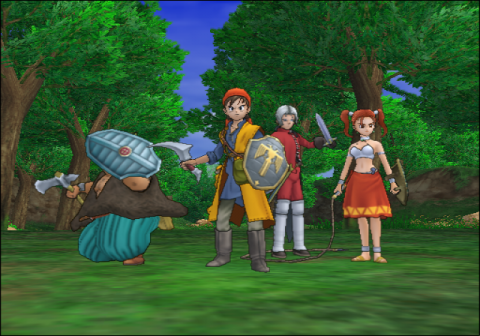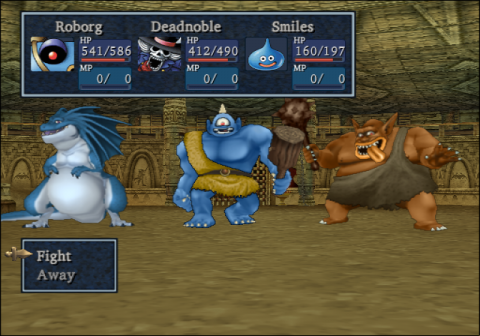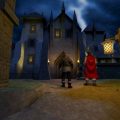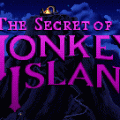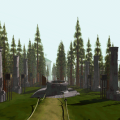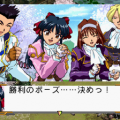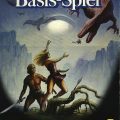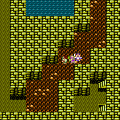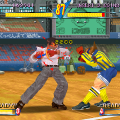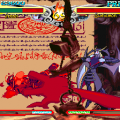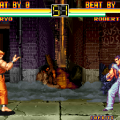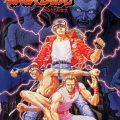- Dragon Quest (Introduction)
- Dragon Quest
- Dragon Quest II
- Dragon Quest III
- Dragon Quest IV: The Chapters of the Chosen
- Dragon Quest V: Hand of the Heavenly Bride
- Dragon Quest VI: Realms of Revelation
- Dragon Quest VII: Fragments of the Forgotten Past
- Dragon Warrior VIII: Journey of the Cursed King
- Dragon Quest XI: Echoes of an Elusive Age
- Slime Mori Mori Dragon Quest
- Dragon Quest Heroes: Rocket Slime
- Slime Mori Mori Dragon Quest 3
- Dragon Quest Heroes
- Dragon Quest Heroes II
Role playing video games have been around since the advent of the home computer, with the likes of Aklabeth, Ultima, Wizardy, and many others. One of the most important of these is Enix’s Dragon Quest (initially known as Dragon Warrior in America.) Created by Yuji Horii, Dragon Quest combined the overhead movement of Ultima with the first-person, random battles of Wizardy, and effectively created the Japanese RPG subgenre. It took Japan by storm, inspired dozens of clones (including Final Fantasy, its primary competitor), and remains one of the most important video games ever made.
By today’s standard, it was a very simplistic game. You’re a lone knight, off to retrieve a sacred artifact stolen by an evil warlord. Along the way, you’ll fight some monsters (including a dragon or two, naturally), buy new weapons, and save a princess. The quest is pretty straightforward, you never gain any extra party members, and fights are primarily determined how much highly you’ve leveled your characters, as opposed to having any real strategy. And yet, it earned admiration all across Japan.
So why, exactly, did Dragon Quest take off the way that it did? For starters, it had immediately accessible appeal due to the artwork supplied by Akira Toriyama, one of the most famous manga artists in Japan, responsible for phenomenons like Dr. Slump and Dragon Ball. Although the in-game graphics were primitive and barely resembled Toriyama’s artwork, it provided a lot of character to the otherwise standard designs of Western RPGs, which were heavily rooted in Dungeons & Dragons.
It was also one of the most in-depth games seen on the Famicom at the time. Back in 1986, if you wanted a complicated game, you needed an expensive PC. But while Dragon Quest isn’t as remotely in-depth as any of those games, it offered significantly more exploration and play time than most other titles, which concentrated on arcade-style action. The soundtrack was also supplied by classically trained musician Koichi Sugiyama, who had previously carved out a living for himself writing background music for commercials. Although the synth of the 8-bit Famicom was simplistic, it supplied a rousing backdrop to the adventure, with a memorable main theme that may as well be Japan’s national anthem.
With its success came several sequels. Dragon Quest II added a longer quest, more items, more spells, and most important, more characters. Dragon Quest III added several different character classes (similar to the original Final Fantasy, which had been released a few months earlier in Japan) and Dragon Quest IV featured multi-chapter adventure that focused on different characters. Each game sold insanely well and established its reputation as one of the most popular franchises in the nation.
Despite the breakout success of Dragon Quest in Japan, it didn’t receive nearly the same response in America. Enix didn’t have any offices outside of their home country, so the original Dragon Quest was published by Nintendo of America in 1989, three years after the initial release. Nintendo had a breakout hit with The Legend of Zelda a few years earlier, despite fears that it may have been too complicated for young American gamers, so they anticipated a similar success. They even included a mini-strategy guide that detailed the entire game, in order to groom newbies into the world of role playing.
Unfortunately, most of America simply ignored the title. The graphics and sound were too primitive. The interface was unwieldy. And perhaps most importantly, it lacked the action and puzzle solving that earned The Legend of Zelda its success, instead replaced with slow-paced, turn-based combat, requiring hours of tedious leveling to advance. Nintendo vastly overestimated demand, and ended up giving away unsold copies for free with subscriptions to Nintendo Power. Because of this, it earned quite a lot of recognition from American NES gamers. However, it was quickly eclipsed by Final Fantasy (designed by rival publisher Square and also published in America by Nintendo), which featured far superior graphics and sound, and far deeper gameplay mechanics. The later iterations – Dragon Warrior II, III and IV – were also published in America by Enix themselves. They were all much improved over the original, but they kept the same ugly graphical style and clumsy interface, and came out far too late, where they competed against the 16-bit Genesis and TurboGrafx-16 titles. As a result, they’re some of the most sought after American released NES games (particularly III and IV.)
Dragon Quest continued to proliferate in Japan, with two more sequels released for the Super Famicom, both of which added greater narrative and character customization. In 1997, Final Fantasy VII popularized JRPGs worldwide with its flashy graphics, which became model for a number of subsequent games. On the other hand, Dragon Quest VII, released in Japan three years later, was comparatively meager, using low budget graphics and barely any CG cutscenes at all. It was greeted with multi-million selling status in Japan, and severe indifference in America. Dragon Quest VIII was released in 2005, this time featuring far superior manga-style cel shaded graphics that finally rivaled Final Fantasy‘s high budget aesthetics. Once again, it took Japan by storm. In America, it sold significantly better than past installments, but nothing compared to the Japanese sales numbers, and certainly not enough to match Final Fantasy.
There are big reasons for this, of course. Throughout its life, Final Fantasy constantly reinvented itself, keeping certain aspects but bucking trends with each iteration. On the other hand, Dragon Quest has been strongly about keeping with tradition. All of them take place in the same European-style medieval world. All of them feature the same key staff members – Horii, Toriyama, and Sugiyama. As a result, the method of storytelling, the characters, the battle system and the style of music is pretty much the same throughout. It’s a series that prides itself not on familiarity and nostalgia, but also in its consistency.
And yet, all of these elements coming together is part of the charm. Although Akira Toriyama has a number of haters (thanks in part to the overproliferation of Dragon Ball Z), but no matter what you think of his human character designs, he’s a damn good monster designer. While Final Fantasy has featured a small handful of recognizable characters – the Tonberry, the Cactaur/Sabotender, and I guess a few others – but Dragon Quest‘s foes are some of the most memorable of any RPG out there. The most prolific, of course, is the slime – a silly little grinning drop of goo that’s usually the first enemy you meet, and the weakest foe in the game. Since then, there have been tons of members of the slime family – metal slimes, flying healing slimes, knight riding slimes, king slimes – each getting progressively sillier looking.
With Dragon Quest V, gamers could actually recruit monsters in their party, a mechanic later seen in the Pokémongames, and has appeared in all subsequent Dragon Quest games in a variety of forms. The fact that the designs have been kept consistent through over twenty years of gaming is impressive – you could barely tell that Final Fantasy XII had any relation to the original Final Fantasy, but Dragon Quest VIII has many of the same monsters as the first Dragon Quest… although this time they’re fully rendered with fully animated, fully 3D cel shaded polygons, rather than static four color pixellated drawings that simply blinked when it attacked. Part of the nostalgia also comes from the sound effects – the series has been using most of the same little 8-bit effects when you attack or dodge, or the little shuffling when you traverse stairs.
The music plays as huge a part in Dragon Quest as any of the other aspects. All of the main games were composed by Koichi Sugiyama, a classicly trained musician with great expertise in writing sweeping, orchestral themes. Part of the problem, though, is that his soundtracks have always been limited by being in video games. The NES/Famicom games had pretty basic sound synth, even for the system, and even the CD-based games stuck with MIDI synth instead of streamed recordings. There are numerous Dragon Quest albums released in Japan, but they’re all Symphonic Suite CDs, with all of the music arranged with a full orchestra. If the original soundtrack is included, it’s usually only as a “Sound Story”, which features sound effects to simulate someone playing the game. There’s a huge difference between the in-game music and the Symphonic Suites – for example, the overworld theme in the original Dragon Warrior is pretty simplistic and grating, but actually sounds pretty beautiful when played by a live orchestra. Listening to these CDs is almost a prerequisite to enjoying the actual in game music.
Dragon Quest is often derided for having poor stories and dull characters. While most of their plots are hardly epic or groundbreaking, that doesn’t necessarily mean that they’re bad. Furthermore, the few games that actually did have really good stories (V and VI) were never originally translated into English. However, compared to a lot of other RPGs, Dragon Quest is certainly a bit simplistic in its narratives, as the plots rarely steps beyond the “go into evil dimension and kill ultimate bad guy” cliché. Similarly, the characters have minimal backstories or personalities. Part of this also has to do with the simplistic graphics and never-changing world design – it’s hard to get attached to things that look like blurry messes of pixels. Toriyama’s characters are generally pretty cool looking, but it’s only starting with the Dragon Quest VIII on the PS2 that any of his artwork has actually appeared ingame.
Another huge part of the nostalgia of Dragon Quest is that it demands that the player use their imagination. Most of the Japanese instruction manuals had full color vignettes of the characters fighting monsters or generally hanging out – similar to the artwork floating around from Chrono Trigger – giving the player’s mind something to flesh out the characters with. There have even been fully illustrated books released in Japan that retell the events using Toriyama style artwork. Again, most non-Japanese gamers miss out on these things.
But Dragon Quest‘s strength relies more on its episodic storytelling than the overall plot. Rather than concentrating on your party members, Dragon Quest focuses on the little stories of the NPCs you meet and the towns you explore. As heroes, you might reunite star crossed lovers, or amend the heart of distraught widowers, or even trade goods across kingdoms. The plus side is that none of the games feature characters like Squall or Tidus, whose personalities tend to put off certain players. It also tends to stay away from silly melodrama, or overly long cutscenes, so gamers sick of these overwrought tendencies may find plenty of solace in Dragon Quest.
The battle system, too, is criticized as being too straightforward. All of the battles are turn-based, with nearly all of them featuring random encounters. Additionally, all fights take place in the first person, and in most of the games, your party members remain invisible offscreen. There’s some quick visual effects and some narration of your attacks, but it’s far from exciting. The upshot to this is that battles move along very quickly, which helps given the high random encounter rates. It seems simple at first, when you don’t have any skills beyond simply hitting “Fight” over and over. However, there are tons of different spells and techniques to learn, especially in the later games, which makes for a remarkable amount of depth. Certain installments include some character class and customization systems, although they’re not as involved as other games like Final Fantasy V.
But again, the charm comes from familiarity – since Dragon Quest is basically the equivalent of video game comfort food, it’s reassuring to play a game that doesn’t require vast memorization of enemy abilities a la Shin Megami Tensei, or study of the gameplay systems a la anything by Tri-Ace. Gamers looking for something new and exciting definitely won’t find it with Dragon Quest, but its straightforward nature does cut down on the clutter that so many other games have introduced. This is a huge part of Dragon Quest‘s appeal, especially with mainstream or lapsed gamers – those who grew up with the old games should fit right into the new ones without having to pay attention to long tutorials or complex menus or overly difficult combat.
There are other aspects that many have complained as feeling dated, although most of these exist for a reason. For example, save points are rare – in most games, you only come across them by visiting churches or castles, and you can’t save on the overworld map. They never recharge your health either – you’ll need to visit an inn for that. Got a dead party member? You’ll still need to head back the church and pay a fee – items that resurrect fallen players usually aren’t found in later in the games, if they exist at all. But as aggravating as these are, they exist for a reason – namely, they add an element of tension that’s missing from most modern RPGs. Yuji Horii has been described a big gambler – Dragon Quest is filled with casino mini-games, and it’s no coincidence that winning a battle feels a lot like winning a jackpot, especially with the slot machine-esque victory noise. Without the crutches of save points, wandering into deep caverns feels more and more like a gamble, as you’re slowly getting weaker with each step, becoming drained of health and magic and curative items. Do you call it a day and head back to town to gear up? Or do you hedge your bets and try to make it all the way to the end? In the end, exploring is a lot more involving when death is on the line.
As a concession, dying isn’t nearly as harsh as other games. Other than a few odd dead end moments found throughout the series, there is no “Game Over” in Dragon Quest. Rather than forcing you to reload a previous save, you’re simply transported back to the closest church, with all of the equipment and experience you’ve gained, but only half your cash. In most of them, you can even store your gold in a bank, protecting you from losing your money. So even after facing death, you don’t necessarily come out of it empty-handed.
Like Final Fantasy, Dragon Quest has a number of spin-off titles separate from the main series. Unlike Final Fantasy, most of these are good-to-decent. Some of these include the dungeon crawling Mysterious Dungeon series (featuring Torneko from Dragon Quest IV and Yangus from Dragon Quest VIII), the Pokémon-esque Monsters series, the Zelda-esque action series Slime Mori Mori (one of which was brought to America as Rocket Slime), and the Swords series, birth from a toy sword that connected to the TV. Additionally, almost all of the games in the main series have been remade to varying capacities, whether featuring improved graphics or being redesigned for portable systems.
Just beware that there are mild storyline spoilers for the series from here on – tread lightly if you’re sensitive to these kinds of things.
Thanks to Aeana for the aid in addition to the recordings of the DS Dragon Quest IV, as well as Red Scarlet, Error, and anyone else from NeoGAF, whose threads provided fruitful research for this article.
Links:
Dragon’s Den An excellent English fan site.
Dragon Quest Shrine Another excellent English fan site.
Realm of Darkness Covers the NES games.
